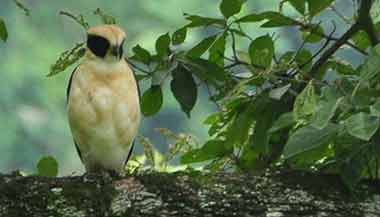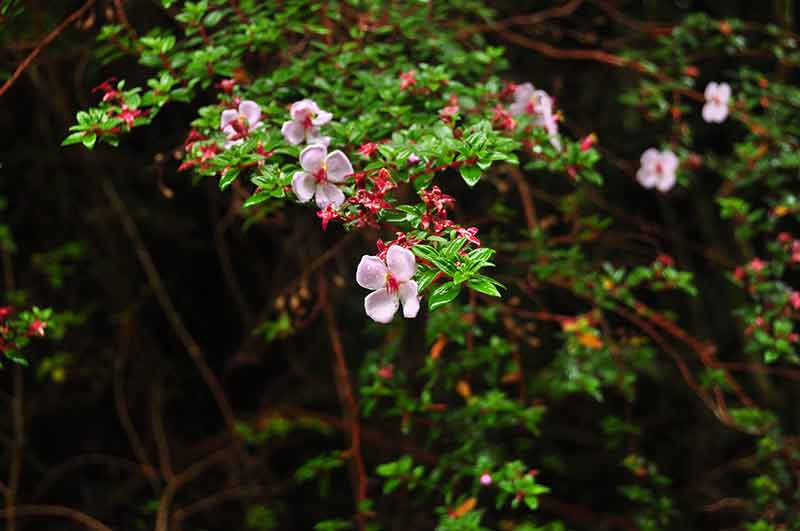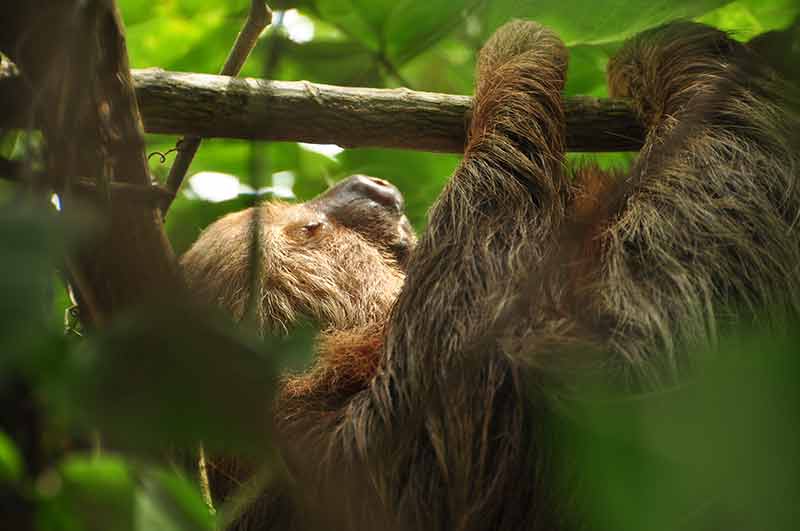Wildlife in Costa Rica 
A little excursion into the wildlife of Costa Rica
It's true: you definitely see a lot of animals in the wild in Costa Rica! They are not afraid, which is largely due to the fact that the animals in Costa Rica do not have to be afraid of people. There is no hunting here (or only very rarely), the Ticos themselves are very fond of animals. In some other Latin American countries you can see locals getting out of the car to photograph a sloth. Here is some information about the animals that you can see every day when traveling through Costa Rica. No claim to completeness.
Monkeys:
Four species of monkeys live in the lush rainforests of Costa Rica and it is easy to observe this unique species in many regions of Costa Rica. There are capuchin monkeys (white-fronted monkey, Cebus), howler monkeys (Congo, Alouatta), squirrel monkeys (Saimiri) and spider monkeys (Spider, Araña, Ateles) and the dense treetops are their home. 
Birds:
Costa Rica's birdlife is exceptionally diverse, with over 850 species - more than twice as many as in Central Europe. Here we present just a few:
The Quetzal
The quetzal, with the scientific name “Pharomachrus mocinno”, is a very beautiful bird with strong red and green tones. The feathers grow up to an impressive 80 centimeters long. The courtship flights that the male performs during the breeding season are very striking. They rise from high trees with their call, which can be heard from far away, and then dive back into the treetops like a green flash.
Today the quetzal only lives in the cloud forests of Central America, primarily in Costa Rica. It requires a constantly moist environment for its nest, which it finds in the cloud forests of Costa Rica. The altitudes on the climb to “Cerro de la muerte” are particularly famous for the natural appearance of the quetzal. With San Gerardo de Dota as its center, the “El Quetzal” National Park was created there.
National bird of Costa Rica
The yellow thrush (Turdus grayi) is a songbird from the thrush family. The yellow thrush is the national bird of Costa Rica; it is called "Yigüirro" here.
How is it that a rather inconspicuous animal, a “gray thrush,” is declared the national bird? The Foreign Ministry explains:
There are numerous reasons why the Yellow Thrush was named the national animal: it is widespread throughout Costa Rica and its character means it seeks to be close to people.
As a result, it is well known among the people and is mentioned in many traditional legends, folk songs and short stories. In addition, the distinctive song of the males during the mating season has contributed greatly to the fame of the genus.
The cormorant:
The cormorant (Phalacrocorax carbo) is a bird species that is also well known in Europe. In Germany it was declared bird of the year in 2010. The diet consists almost exclusively of fish. Cormorants are social at all times of the year and their breeding colonies are located along rivers or bodies of water. In Costa Rica, many of these species can be found, for example in the Caño negro nature reserve.
Hummingbirds: 
There are at least 55 different species of hummingbirds to observe in Costa Rica. One characteristic is the whirring flight, which is reminiscent of a bumblebee. They move their wings up and down up to 80 times per second (during courtship the frequency can be increased to almost 200 wing beats per second).
The red macaw
The macaw Macao, also called "Ara roja" is one of Costa Rica's flagship animals.
It is a species of parrot from the genus Macaw and is one of the largest parrots in the world with a length of up to 85 cm.
The “Ara roja” is a very sociable bird that usually travels in groups - up to 20 animals can often be observed together. They only move away from the group in pairs during the breeding season. Like (almost) all parrots, the animals are strictly monogamous until death parts them. The nesting season is during the dry period, the nests are built at high altitudes, often unused nests or caves (e.g. tree hollows abandoned by woodpeckers) are used. The female only lays 1-3 eggs and the breeding period lasts 4-5 weeks. The young remain in the nest for 3-4 months and are lovingly cared for by their parents.
There were once a lot of Aras rojas in Costa Rica - the species is now threatened with extinction and is actively protected.

 EN
EN  DE
DE  FR
FR  ES
ES